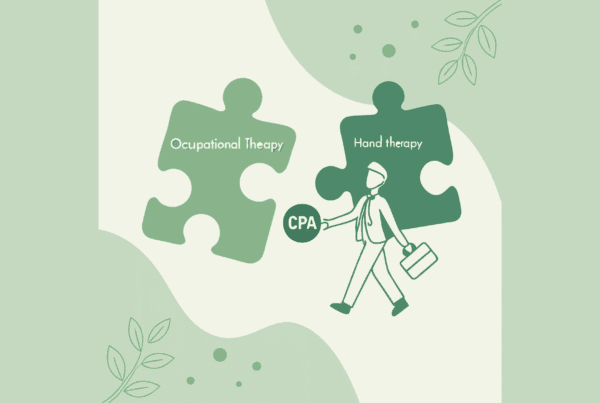If you own a Sleep Medicine practice in New Hampshire and are thinking about your future, you’ve come to the right place. The decision to sell is significant. It involves your legacy, your staff, and your financial security. This guide provides a clear overview of the current market, what drives your practice’s value, and how to navigate the sale process to achieve your goals. We’ll help you understand what your practice is worth and the steps to a successful transition.
Curious about what your practice might be worth in today’s market?
The New Hampshire Sleep Medicine Market is Strong
The environment for selling a sleep medicine practice in New Hampshire is healthy. Nationally, the market for sleep disorder clinics is growing steadily, projected to expand by over 5% annually. With the East Coast representing a third of this market, New Hampshire is in a prime position. Your practice serves a large and growing patient base, with nearly a third of all adults experiencing sleep problems. This demand is recognized by major health systems across the state, from Southern NH Health to Portsmouth Regional Hospital, which have invested in their own sleep centers. This activity from major players confirms a simple fact. Your services are valuable, and there is a strong appetite for well-run sleep practices in the Granite State.
Key Considerations Beyond Patient Volume
When a potential buyer looks at your practice, they see more than just the number of sleep studies you perform. They are evaluating the quality and durability of your business. To prepare for a sale, you need to see your practice through their eyes.
Beyond the Sleep Study: Ancillary Services
Does your practice offer services beyond diagnostics, such as selling CPAP machines and supplies? This durable medical equipment (DME) component creates a recurring revenue stream that is highly attractive to buyers. It shows your practice has multiple avenues for growth and is not solely dependent on procedure-based reimbursement.
Your Referral Network’s Strength
A sophisticated buyer will map out your referral patterns. Are your patients coming from a wide range of primary care physicians, pulmonologists, and ENTs, or are you dependent on a few key sources? A diversified and loyal referral network is a valuable asset that reduces risk and demonstrates market penetration.
Provider Dependency and Scalability
If you are the sole provider, a buyer’s main concern will be transition risk. Practices that have associate physicians, a trusted nurse practitioner, or established protocols that don’t rely entirely on the owner are perceived as more scalable and less risky. This structure often leads to higher valuations.
What’s Happening in the M&A Market?
The healthcare landscape is shifting toward consolidation, and sleep medicine is no exception. We are seeing active interest from several types of buyers in New Hampshire, each with different goals. Hospital systems are often looking to expand their service lines and capture a larger patient population within their network. Larger, multi-state sleep medicine platforms and private equity groups are also seeking to acquire established practices to build regional density. This competition is good news for sellers. It creates a dynamic market where multiple bidders can drive up the final sale price. The key is to run a confidential, structured process that introduces your practice to the right set of potential partners, not just the first one who makes an offer.
The Path to a Successful Sale
Selling your practice is a multi-stage journey, not a single event. Thinking you can just decide to sell and be done in a month is a common mistake. The owners who achieve the best outcomes are the ones who prepare well in advance. Planning 2 to 3 years ahead is not too early. It gives you time to get your practice ready.
-
Foundational Work. This is the most important phase. It involves a deep financial review to calculate your true profitability (Adjusted EBITDA), organizing legal and operational documents, and getting a professional valuation. This is where you fix things that could lower your value.
-
Strategic Marketing. Your practice is confidentially presented to a curated list of qualified buyers. The goal is to create a competitive environment while protecting the identity of your practice and preventing disruption to your staff and patients.
-
Negotiation and Structuring. After receiving initial offers, we help you negotiate not just the price, but the terms. This includes your future role, what happens to your staff, and how the deal is structured for tax efficiency.
-
Due Diligence. The buyer will conduct a thorough review of your financials, contracts, and operations. Being prepared for this intense phase is critical. Many deals fall apart here due to surprises or disorganized information.
-
Closing and Transition. This final step involves the legal transfer of the practice and the beginning of the transition plan that was agreed upon during negotiations.
Preparing properly for buyer due diligence can prevent unexpected issues.
How Your Sleep Practice is Valued
Forget simple rules of thumb, like a multiple of your revenue. Sophisticated buyers don’t use them, and neither should you. The value of your practice is based on its future cash flow and risk profile, a metric known as Adjusted EBITDA (Earnings Before Interest, Taxes, Depreciation, and Amortization). This figure represents your practice’s true annual profitability after Cpas normalize for owner-specific expenses like an above-market salary or personal car lease. That Adjusted EBITDA figure is then multiplied by a number (the multiple) to determine your practice’s enterprise value. That multiple is not random. It is influenced by several factors.
| Factor | Impact on Value |
|---|---|
| Practice Scale | Higher EBITDA reduces perceived risk, leading to a higher multiple. |
| Provider Model | An associate-driven practice is worth more than a solo owner-reliant one. |
| Ancillary Revenue | Strong, profitable DME or other service lines increase the multiple. |
| Payer Mix | A healthy mix of commercial insurance payers is seen as stable and valuable. |
| Growth Profile | A clear path to growth, like an underserved local market, boosts value. |
A practice with under $500K in Adjusted EBITDA might receive a 3.0x to 5.0x multiple, while a practice with over $1M could command a multiple of 5.5x to 7.5x or more. Understanding and improving these drivers is the first step toward maximizing your sale price.
Life After the Sale: Planning Your Next Chapter
The transaction doesn’t end when the check is cashed. The structure of your deal has major implications for your future. You might continue working for a few years under an employment agreement. You could also negotiate for an “earnout,” where you receive additional payments if the practice hits certain performance targets after the sale. Another common structure is “rollover equity,” where you retain a minority ownership stake in the new, larger company. This gives you a “second bite at the apple,” allowing you to benefit from the future growth you helped create. These are not just financial details. They relate directly to your desire for future involvement, your legacy, and your timeline. Planning for this post-sale reality is a core part of the negotiation process.
The right exit approach depends on your personal and financial objectives.
Frequently Asked Questions
What is the current market outlook for selling a Sleep Medicine practice in New Hampshire?
The market for Sleep Medicine practices in New Hampshire is strong and growing. Nationally, the sleep disorder clinic market is expanding by over 5% annually, with the East Coast representing a third of this market. New Hampshire’s growing patient base and investments by major health systems like Southern NH Health and Portsmouth Regional Hospital indicate a healthy demand for well-run sleep practices.
What aspects beyond patient volume do buyers consider when evaluating a Sleep Medicine practice for sale?
Buyers look at several factors beyond patient volume, including ancillary services like CPAP machine sales which provide recurring revenue, the strength and diversity of the referral network from primary care physicians and specialists, and the provider model. Practices with multiple providers and established protocols are perceived as more scalable and less risky, which often leads to higher valuations.
How is the value of a Sleep Medicine practice determined in New Hampshire?
The value is primarily based on Adjusted EBITDA (Earnings Before Interest, Taxes, Depreciation, and Amortization), representing true profitability after normalizing owner-specific expenses. This figure is then multiplied by a multiple influenced by practice scale, provider model, ancillary revenue, payer mix, and growth profile. For example, practices with under $500K EBITDA might get a 3.0x to 5.0x multiple, whereas those with over $1M may command 5.5x to 7.5x or more.
What does the sale process of a Sleep Medicine practice in New Hampshire involve?
Selling your practice is a multi-stage process including: 1) Foundational work like financial review and valuation, 2) Strategic marketing to potential qualified buyers, 3) Negotiation and deal structuring around price, terms, and future roles, 4) Due diligence where buyers review financial and operational documents, and 5) Closing and transition with legal transfer and agreed-upon transition plans. Planning 2 to 3 years ahead is advised for best results.
What should Sellers consider for life after selling their Sleep Medicine practice?
The structure of the sale impacts future involvement and finances. Options include continuing to work under employment agreements, earnout payments based on performance targets, or rollover equity that retains minority ownership in the acquiring company. These choices affect legacy and ongoing income, so planning and negotiation for the post-sale phase is an important part of the process.



